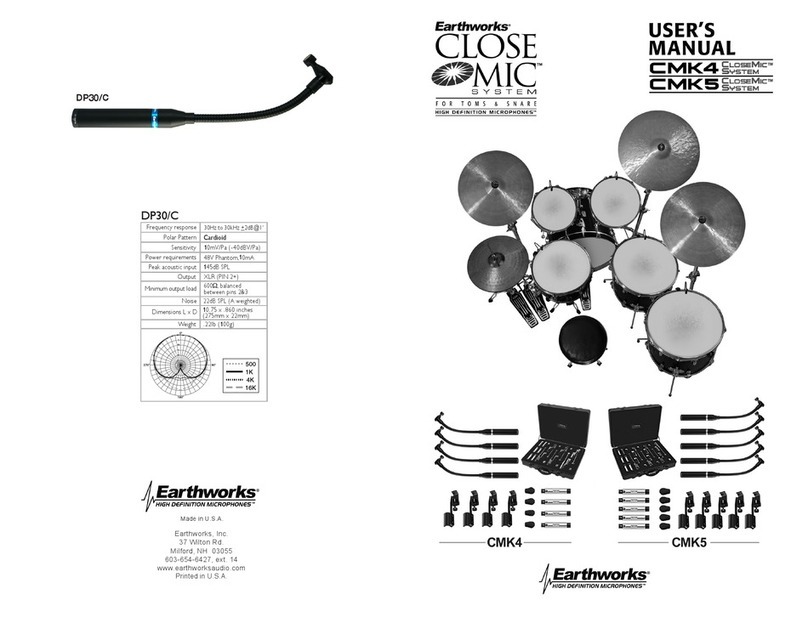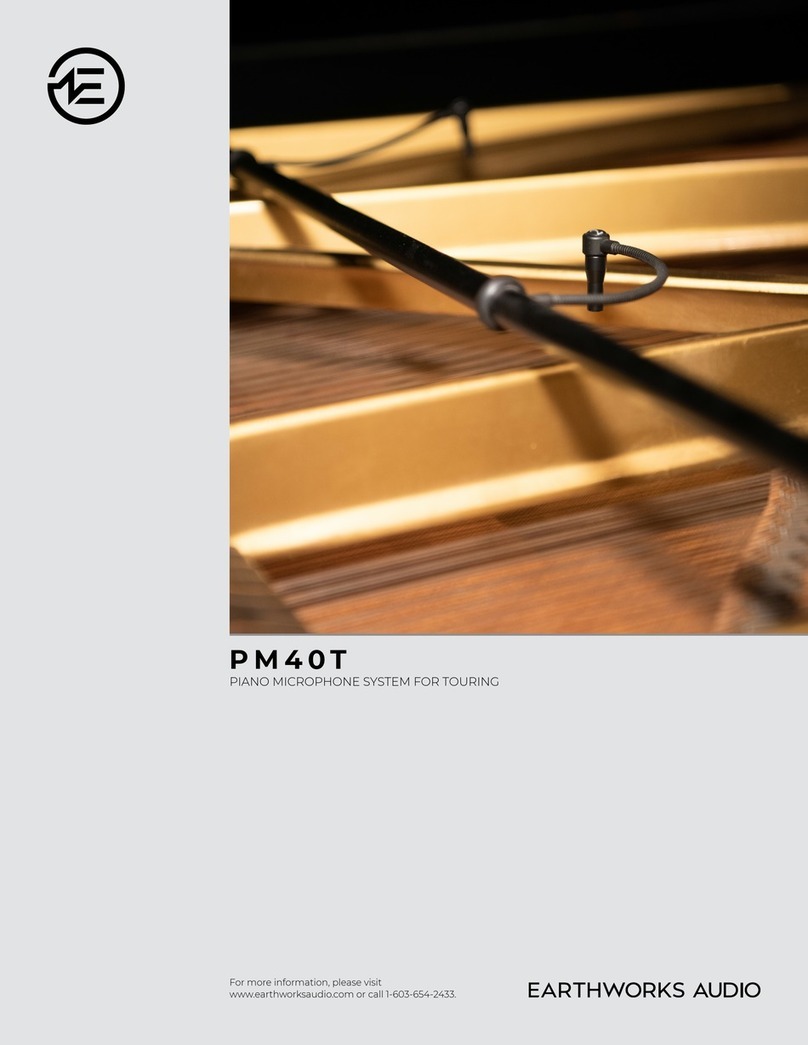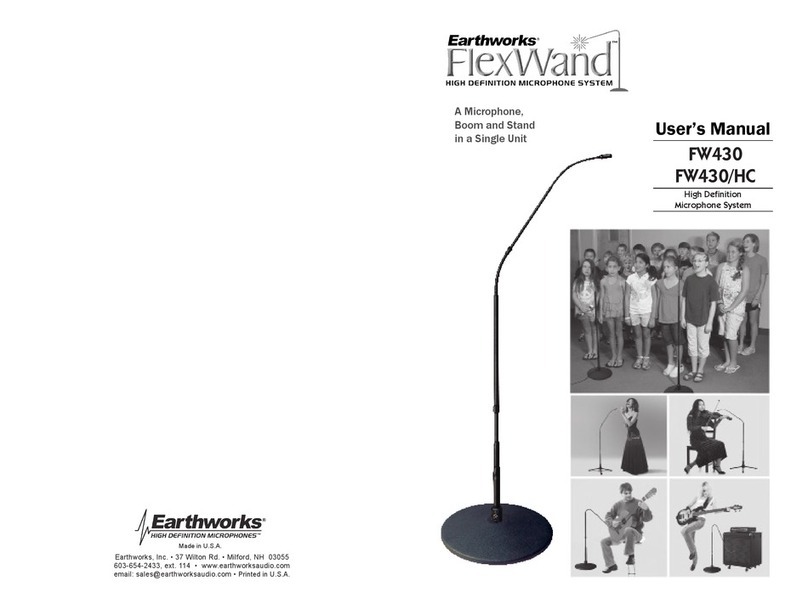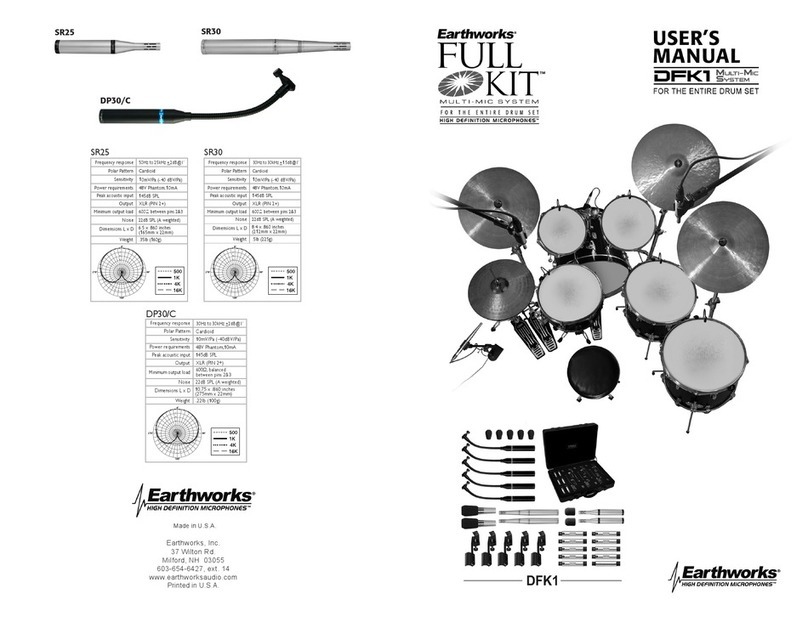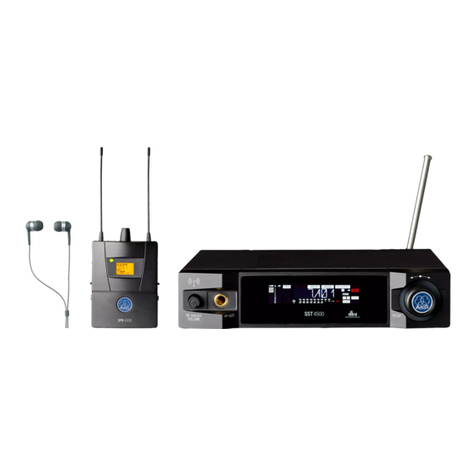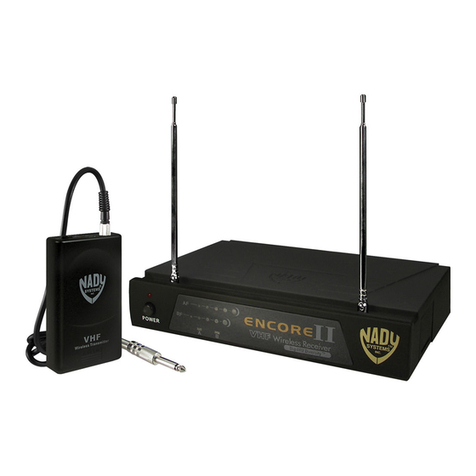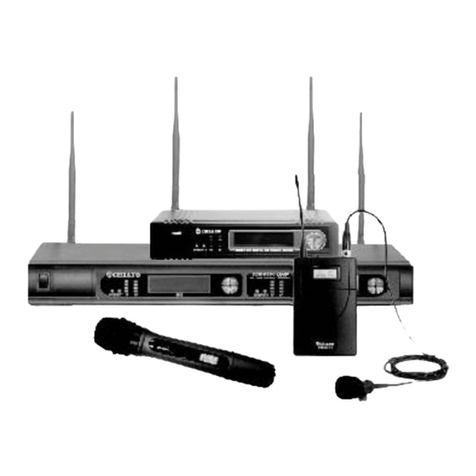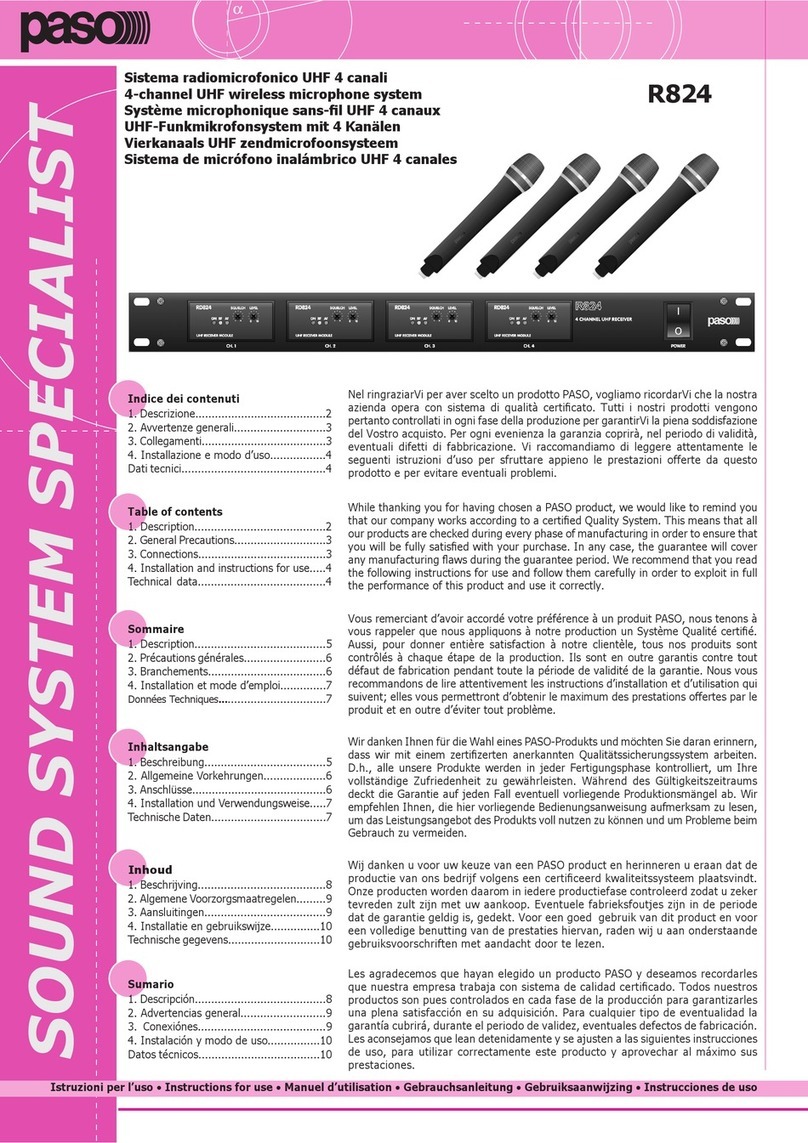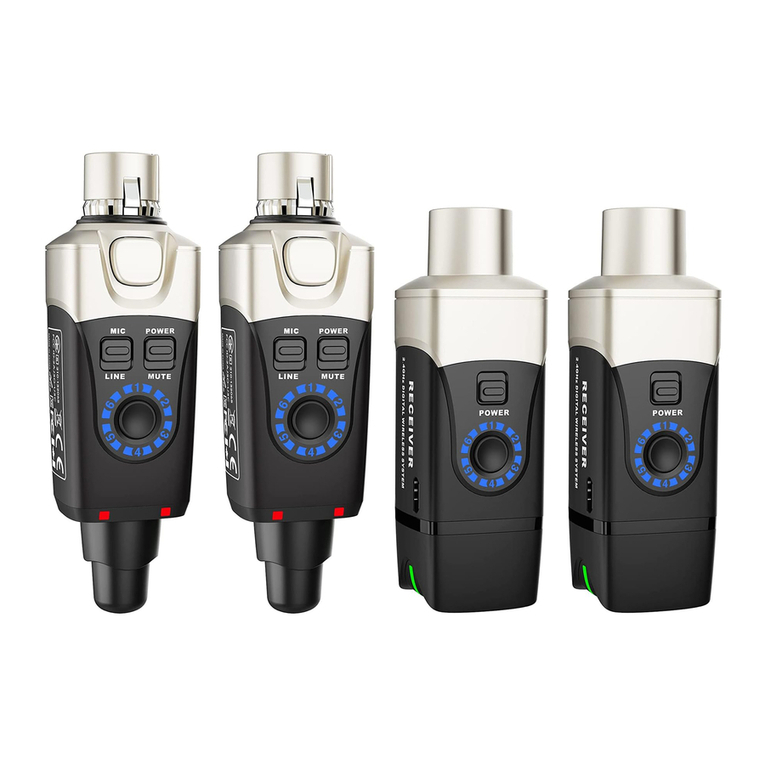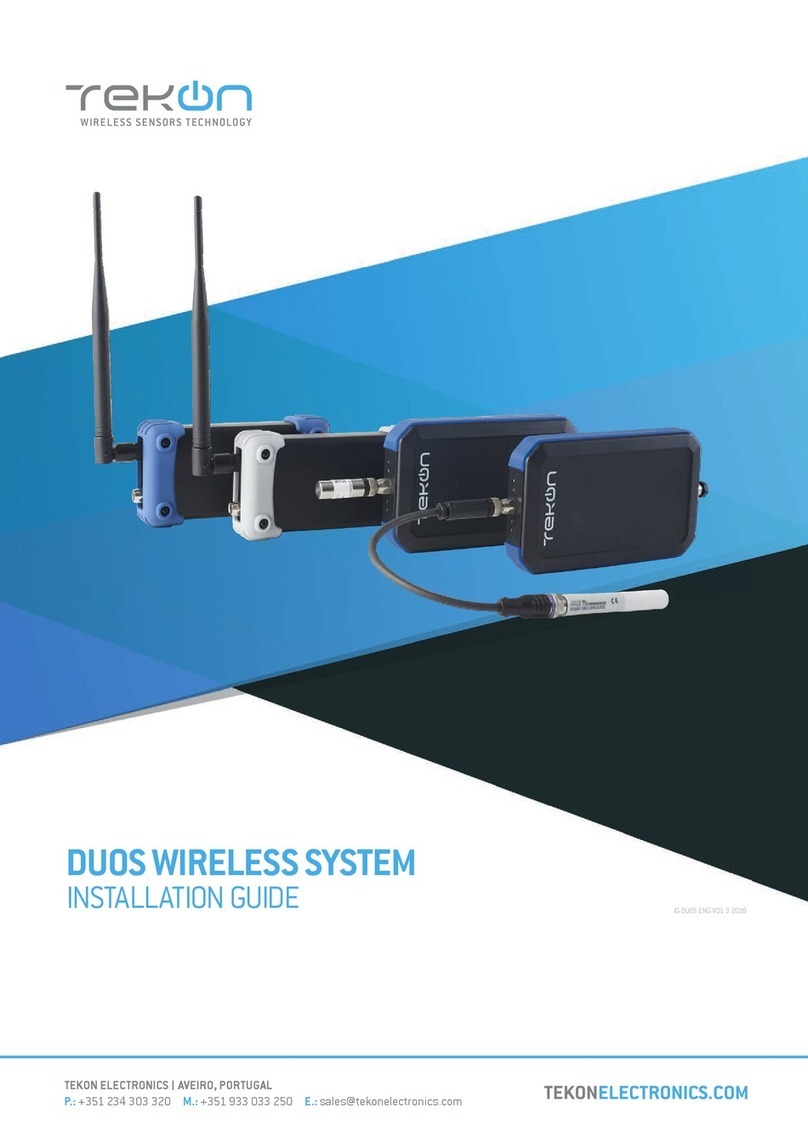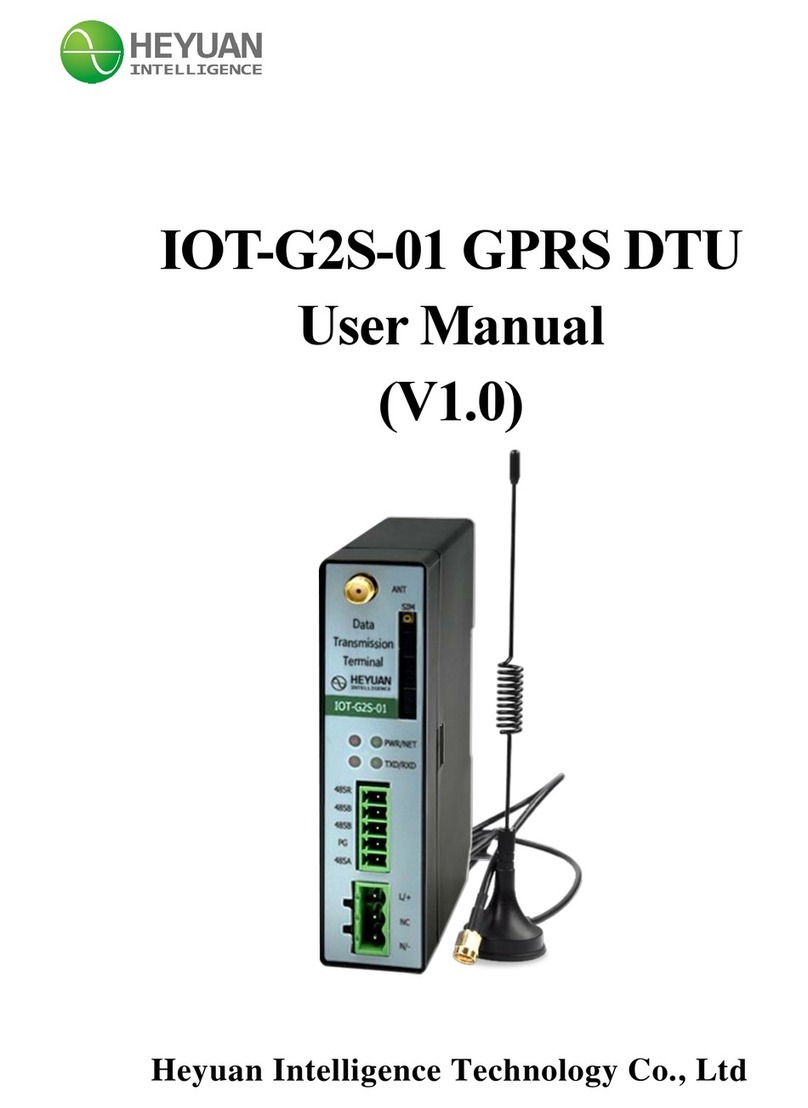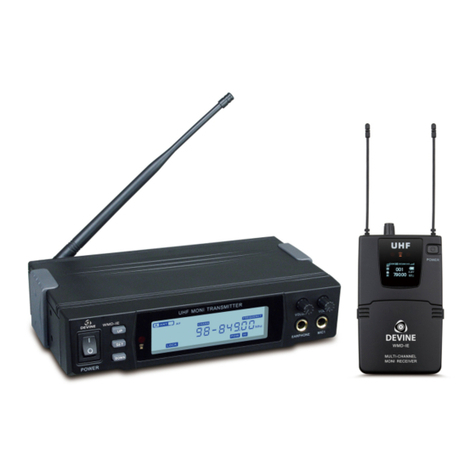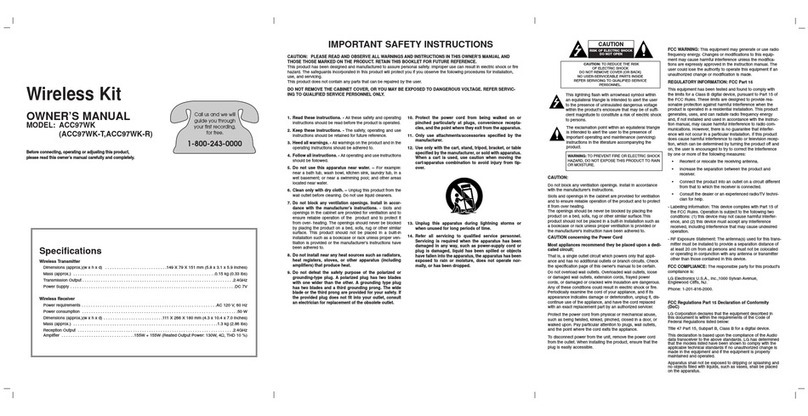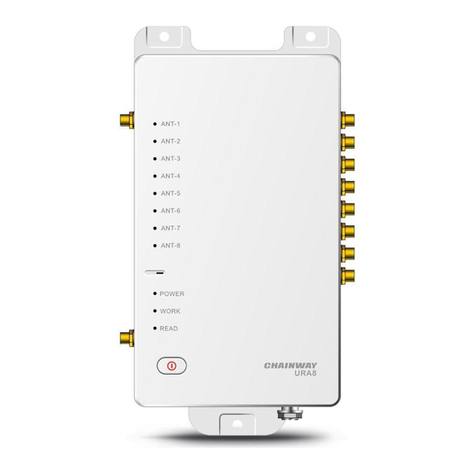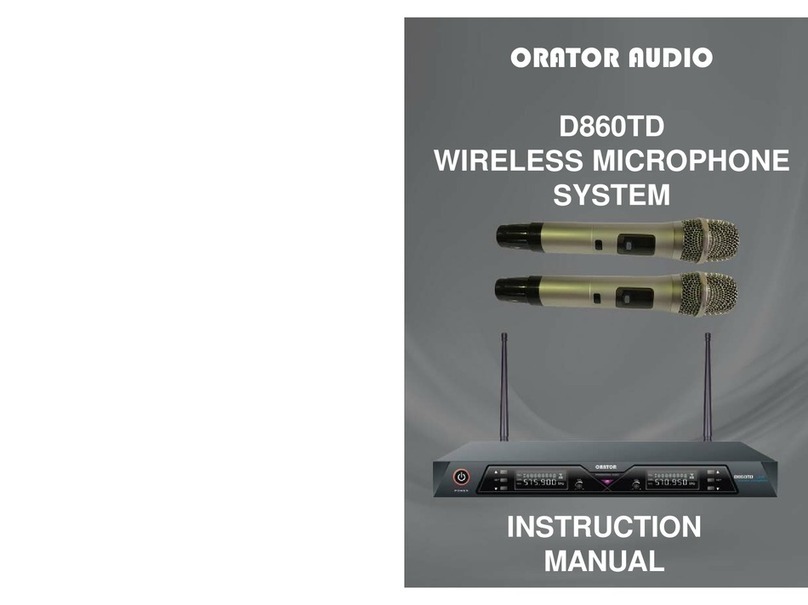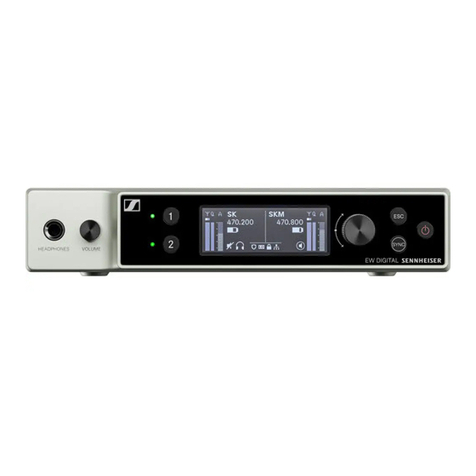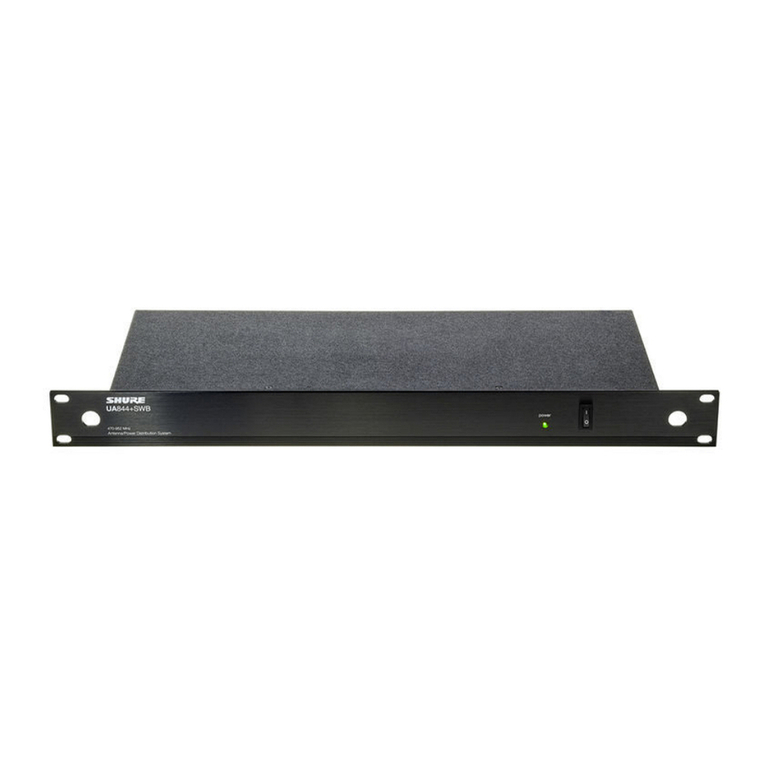Congratulations on your purchase of the innovative Earthworks PianoMic™ System.
We know you will be thrilled with the results you achieve using the PianoMic™ Sys-
tem for both live performance and recording.
Items Enclosed with your New Earthworks PianoMic™ System:
PianoMic™ System Model PM40
1 – PianoMic™ telescoping bar with attached microphone heads
1 – Microphone electronics box
1 – Leather pouch for electronics box
1 – Mic stand mounting bracket for electronics box
2 – Ears for the mounting bracket
2 – Screws for the ears & bracket
4 – Felt pads with adhesive backing
1 - User’s Manual for PianoMic™ System
1 – Carrying case
USING THE PIANOMIC™ SYSTEM
The majority of those who purchase the PianoMic™ System have experience in
miking pianos with conventional microphones, and may nd the close-miking tech-
niques described in this Manual to be unconventional. Please keep in mind that the
PianoMic™ System uses a number of new technologies and that the PianoMic™
microphones work and perform much differently than conventional microphones.
The typical practices for piano miking using conventional microphones will most
likely not apply when using the PianoMic™ System. With the PianoMic™ System
the rules for miking pianos have changed.
Conventional miking practices suggest that a piano must be miked from outside
to achieve a good sound, and that a good piano sound cannot be achieved with
closely placed microphones inside the piano, especially with the lid closed. When
you listen to the incredible results achieved using the PianoMic™ System (at full-
stick, half-stick or lid closed), you will realize how unique and ground-breaking
it actually is. As the PianoMic™ System changes many of the conventional rules
and methods of miking pianos; we strongly suggest that you start by following our
guidelines rst. Afterwards, if you want to experiment, you can take it from there.
The Earthworks PianoMic™ System incorporates a number of proprietary
technologies that allow this method of close-miking pianos to achieve results
that have previously not been possible. This improved performance has been
accomplished by using specially designed High Denition Microphones cre-
ated specically to work inside a piano. These carefully matched Random In-
cidence omni microphones have extremely fast impulse response, very short
diaphragm settling time, extended frequency response (4Hz to 40kHz), near
perfect polar response, high current Class A ampliers and the ability to handle
sound pressure levels up to 148dB SPL.
EVEN IF YOU DON’T LIKE READING MANUALS PLEASE READ
THIS SECTION BEFORE INSTALLING THE PIANOMIC™ SYSTEM
1
Version 5, July 7, 2011
